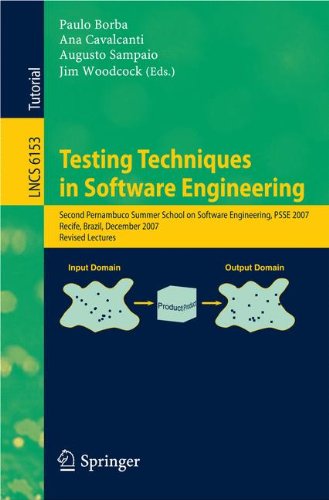

Most ebook files are in PDF format, so you can easily read them using various software such as Foxit Reader or directly on the Google Chrome browser.
Some ebook files are released by publishers in other formats such as .awz, .mobi, .epub, .fb2, etc. You may need to install specific software to read these formats on mobile/PC, such as Calibre.
Please read the tutorial at this link: https://ebookbell.com/faq
We offer FREE conversion to the popular formats you request; however, this may take some time. Therefore, right after payment, please email us, and we will try to provide the service as quickly as possible.
For some exceptional file formats or broken links (if any), please refrain from opening any disputes. Instead, email us first, and we will try to assist within a maximum of 6 hours.
EbookBell Team

4.0
16 reviewsThe Pernambuco School on Software Engineering (PSSE) 2007 was the second in a series of events devoted to the study of advanced computer science and to the promotion of international scienti?c collaboration. The main theme in 2007 was testing. Testing is nowadays a key activity for assuring software quality. The summer school and its proceedings were intended to give a detailed tutorial introduction to the scienti?c basis of this activity and its state of the art. Theseproceedingsrecordthecontributionsfromtheinvitedlecturers.Eachof thechaptersistheresultofathoroughrevisionoftheinitialnotesprovidedtothe participants of the school. The revision was inspired by the synergy generated by the opportunity for the lecturers to present and discuss their work among themselves and with the school’s attendees. The editors have tried to produce a coherent view of the topic by harmonizing these contributions, smoothing out di?erences in notation and approach, and providing links between the lectures. We apologize to the authors for any errors introduced by our extensive editing. Although the chapters are linked in severalways, each one is su?ciently se- contained to be read in isolation. Nevertheless, Chap. 1 should be read ?rst by those interested in an introduction to testing. Chapter 1 introduces the terminology adopted in this book. It also provides an overview of the testing process, and of the types (functional, structural, and so on)anddimensions(unit,integration,andsoon)ofthetestingactivity.Themain strategies employed in the central activity of test selection are also discussed. Most of the material presented in this introductory chapter is addressedin more depth in the following chapters.